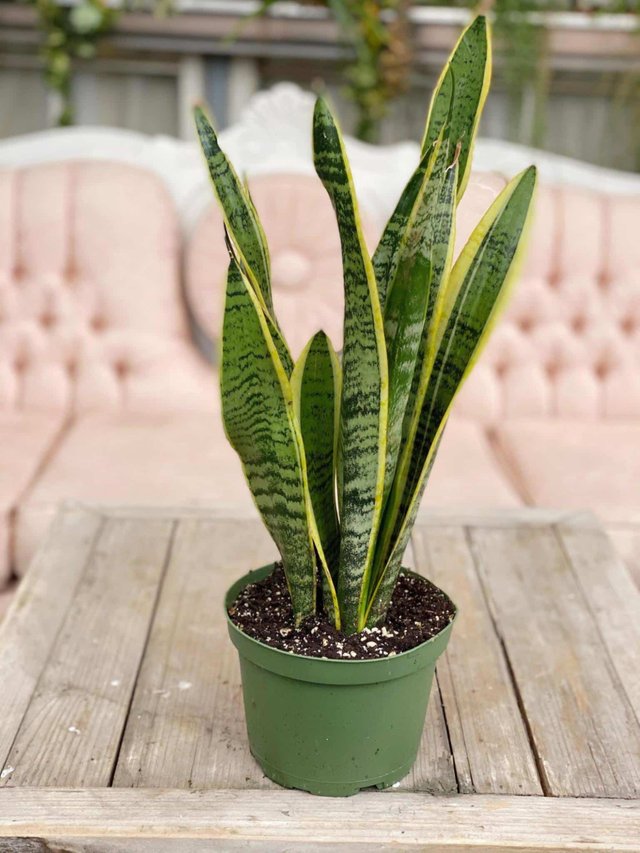Snake plant

The snake plant (Sansevieria or Dracaena trifasciata) is a popular, low-maintenance houseplant known for its striking, upright, sword-shaped leaves and air-purifying qualities. It is native to tropical regions of West Africa and is also commonly called mother-in-law's tongue due to the sharp tips of its leaves.
Key Characteristics
- Appearance:
The leaves are thick, fleshy, and often have a variegated pattern with green, yellow, or gray stripes.
Growth is upright, creating a sleek and modern aesthetic.
- Size:
The plant's size varies by species and cultivar, ranging from 6 inches to over 4 feet tall.
- Durability:
Snake plants are highly resilient, thriving in a variety of conditions and tolerating some neglect.
Care Requirements
Light: Snake plants are highly adaptable. They prefer bright, indirect sunlight but can also survive in low-light conditions.
Watering: Allow the soil to dry out completely between waterings. Overwatering can lead to root rot, as the plant stores water in its thick leaves.
Temperature: They thrive in temperatures between 60°F to 80°F (15°C to 27°C) and are sensitive to cold drafts.
Soil: Use well-draining soil, such as a cactus or succulent mix.
Fertilizer: Feed the plant sparingly during the growing season (spring and summer) with a diluted general-purpose fertilizer.
Benefits
- Air Purification:
The snake plant is one of the few plants capable of converting carbon dioxide into oxygen at night, making it an excellent choice for bedrooms. It also filters toxins like formaldehyde, benzene, and xylene from the air.
- Aesthetic Appeal:
Its modern, minimalist look complements a wide range of interior styles.
- Easy to Propagate:
Snake plants can be propagated through leaf cuttings or by dividing the root rhizomes.
Common Varieties
Sansevieria trifasciata 'Laurentii': Features yellow-edged leaves with green banding.
Sansevieria cylindrica: Has round, tubular leaves that grow in a fan shape.
Sansevieria ‘Moonshine’: Boasts silvery-green leaves for a unique appearance.
Sansevieria ‘Black Coral’: Dark green leaves with lighter green horizontal stripes.
Cautions
Toxicity: While snake plants are generally safe to handle, they are mildly toxic if ingested, potentially causing nausea or vomiting in pets and humans.
Conclusion
The snake plant is an ideal houseplant for beginners and seasoned plant enthusiasts alike. Its combination of beauty, versatility, and hardiness makes it a favorite in homes, offices, and public spaces.